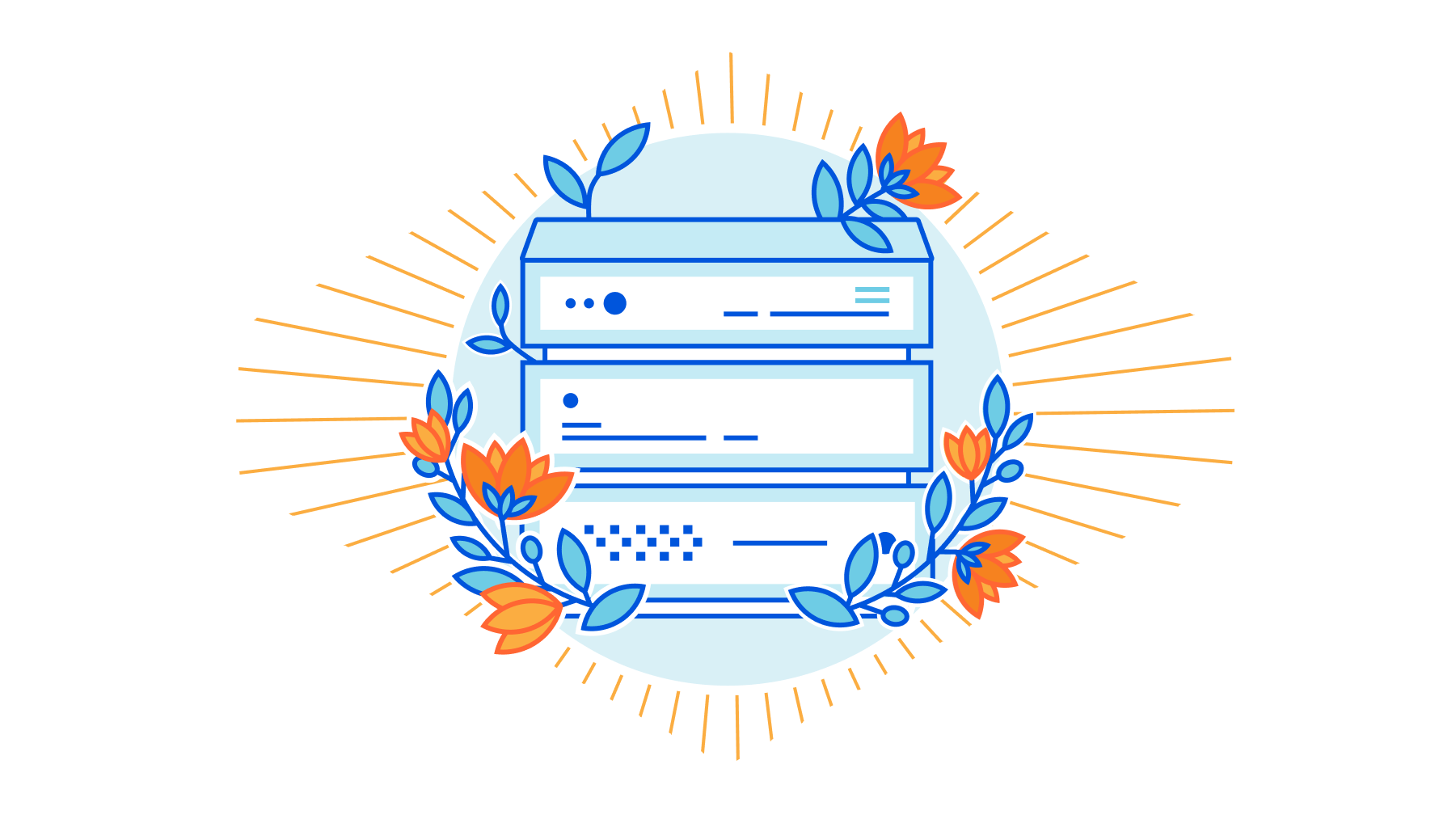Independent report shows: moving to Cloudflare can cut your carbon footprint

This post is also available in 简体中文, Français and Español.

In July 2021, Cloudflare described that although we did not start out with the goal to reduce the Internet's environmental impact, that has changed. Our mission is to help build a better Internet, and clearly a better Internet must be sustainable.
As we continue to hunt for efficiencies in every component of our network hardware, every piece of software we write, and every Internet protocol we support, we also want to understand in terms of Internet architecture how moving network security, performance, and reliability functions like those offered by Cloudflare from on-premise solutions to the cloud affects sustainability.
To that end, earlier this year we commissioned a study from the consulting firm Analysys Mason to evaluate the relative carbon efficiency of network functions like firewalls, WAF, SD-WAN, DDoS protection, content servers, and others that are provided through Cloudflare against similar on-premise solutions.
Although the full report will not be available until next year, we are pleased to share that according to initial findings:
Cloudflare Web Application Firewall (WAF) "generates up to around 90% less carbon than on-premises appliances at low-medium traffic demand."
Needless to say, we Continue reading
A more sustainable end-of-life for your legacy hardware appliances with Cloudflare and Iron Mountain


Today, as part of Cloudflare’s Impact Week, we’re excited to announce an opportunity for Cloudflare customers to make it easier to decommission and dispose of their used hardware appliances sustainably. We’re partnering with Iron Mountain to offer preferred pricing and discounts for Cloudflare customers that recycle or remarket legacy hardware through its service.
Replacing legacy hardware with Cloudflare’s network
Cloudflare’s products enable customers to replace legacy hardware appliances with our global network. Connecting to our network enables access to firewall (including WAF and Network Firewalls, Intrusion Detection Systems, etc), DDoS mitigation, VPN replacement, WAN optimization, and other networking and security functions that were traditionally delivered in physical hardware. These are served from our network and delivered as a service. This creates a myriad of benefits for customers including stronger security, better performance, lower operational overhead, and none of the headaches of traditional hardware like capacity planning, maintenance, or upgrade cycles. It’s also better for the Earth: our multi-tenant SaaS approach means more efficiency and a lower carbon footprint to deliver those functions.
But what happens with all that hardware you no longer need to maintain after switching to Cloudflare?

The life of a hardware box
The life of a hardware Continue reading
Historical emissions offsets (and Scope 3 sneak preview)


In July 2021, Cloudflare committed to removing or offsetting the historical emissions associated with powering our network by 2025. Earlier this year, after a comprehensive analysis of our records, we determined that our network has emitted approximately 31,284 metric tons (MTs) of carbon dioxide equivalent (CO2e) since our founding.
Today, we are excited to announce our first step toward offsetting our historical emissions by investing in 6,060 MTs’ worth of reforestation carbon offsets as part of the Pacajai Reduction of Emissions from Deforestation and forest Degradation (REDD+) Project in the State of Para, Brazil.
Generally, REDD+ projects attempt to create financial value for carbon stored in forests by using market approaches to compensate landowners for not clearing or degrading forests. From 2007 to 2016, approximately 13% of global carbon emissions from anthropogenic sources were the result of land use change, including deforestation and forest degradation. REDD+ projects are considered a low-cost policy mechanism to reduce emissions and promote co-benefits of reducing deforestation, including biodiversity conservation, sustainable management of forests, and conservation of existing carbon stocks. REDD projects were first recognized as part of the 11th Conference of the Parties (COP) of the United Nations Framework Convention on Climate Change in Continue reading
How we redesigned our offices to be more sustainable


At Cloudflare, we are working hard to ensure that we are making a positive impact on the surrounding environment, with the goal of building the most sustainable network. At the same time, we want to make sure that the positive changes that we are making are also something that our local Cloudflare team members can touch and feel, and know that in each of our actions we are having a positive impact on the environment around us. This is why we make sustainability one of the underlying goals of the design, construction, and operations of our global office spaces.
To make this type of pervasive change we have focused our efforts in three main areas: working with sustainable construction materials, efficient operations, and renewable energy purchasing (using clean sources like sunlight and wind). We believe that sustainable design goes far beyond just purchasing recycled and regenerative products. If you don’t operate your space with efficiency and renewables in mind, we haven’t fully accounted for all of our environmental impact.
Sustainability in office design & construction

Since 2020, we have been redefining how our teams work Continue reading
How we’re making Cloudflare’s infrastructure more sustainable


Whether you are building a global network or buying groceries, some rules of sustainable living remain the same: be thoughtful about what you get, make the most out of what you have, and try to upcycle your waste rather than throwing it away. These rules are central to Cloudflare — we take helping build a better Internet seriously, and we define this as not just having the most secure, reliable, and performant network — but also the most sustainable one.
With incredible growth of the Internet, and the increased usage of Cloudflare’s network, even linear improvements to sustainability in our hardware today will result in exponential gains in the future. We want to use this post to outline how we think about the sustainability impact of the hardware in our network, and what we’re doing to continually mitigate that impact.
Sustainability in the realm of servers
The total carbon footprint of a server is approximately 6 tons of Carbon Dioxide equivalent (CO2eq) when used in the US. There are four parts to the carbon footprint of any computing device:
- The embodied emissions: source materials and production
- Packing and shipping
- Use of the product
- End of life.
The emissions from the Continue reading
More bots, more trees


Once a year, we pull data from our Bot Fight Mode to determine the number of trees we can donate to our partners at One Tree Planted. It's part of the commitment we made in 2019 to deter malicious bots online by redirecting them to a challenge page that requires them to perform computationally intensive, but meaningless tasks. While we use these tasks to drive up the bill for bot operators, we account for the carbon cost by planting trees.
This year when we pulled the numbers, we saw something exciting. While the number of bot detections has gone significantly up, the time bots spend in the Bot Fight Mode challenge page has gone way down. We’ve observed that bot operators are giving up quickly, and moving on to other, unprotected targets. Bot Fight Mode is getting smarter at detecting bots and more efficient at deterring bot operators, and that’s a win for Cloudflare and the environment.
What’s changed?
We’ve seen two changes this year in the Bot Fight Mode results. First, the time attackers spend in Bot Fight Mode challenges has reduced by 166%. Many bot operators are disconnecting almost immediately now from Cloudflare challenge pages. We expect this Continue reading
Cloud Networking Platforms – it’s all about making choices!
Whether it is something as simple as what kind of coffee to order for your commute to the office, which route to take to avoid traffic, or in my case, whether to support the USA or England in the 2022 world cup group stage game, we all make a myriad of choices every day.
A Quick Look at AWS Scalable Reliable Datagram Protocol
One of the most exciting announcements from the last AWS re:Invent was the Elastic Network Adapter (ENA) Express functionality that uses the Scalable Reliable Datagram (SRD) protocol as the transport protocol for the overlay virtual networks. AWS claims ENA Express can push 25 Gbps over a single TCP flow and that SRD improves the tail latency (99.9 percentile) for high-throughput workloads by 85%.
Ignoring the “DPUs could change the network forever” blogosphere reactions (hint: they won’t), let’s see what could be happening behind the scenes and why SRD improves TCP throughput and tail latency.
A Quick Look at AWS Scalable Reliable Datagram Protocol
One of the most exciting announcements from the last AWS re:Invent was the Elastic Network Adapter (ENA) Express functionality that uses the Scalable Reliable Datagram (SRD) protocol as the transport protocol for the overlay virtual networks. AWS claims ENA Express can push 25 Gbps over a single TCP flow and that SRD improves the tail latency (99.9 percentile) for high-throughput workloads by 85%.
Ignoring the “DPUs could change the network forever” blogosphere reactions (hint: they won’t), let’s see what could be happening behind the scenes and why SRD improves TCP throughput and tail latency.
In Defense of OSPF In The Underlay (In Some Situations)
When choosing an underlay for an EVPN/VXAN network, the prevailing wisdom is that BGP is the best choice for the underlay routing protocol. And overall, I think that’s true. But OSPF can make a compelling underlay too, as it has a few logistical advantages over BGP in certain cases.
When building out EVPN/VXLAN networks, I like to break the build into four components. They are layers that are built one-by-one on top of each other.
- Topology (typically leaf/spine)
- Underlay (provides IP connecitivity for loopbacks)
- Overlay (exchanges EVPN routes)
- EVPN services (these are the Layer 2 and Layer 3 networks internal hosts and external networks connect to)
This article is exclusively about the underlay portion. It’s a very simple routed network that has one job, and job only:
Provide routes to enable IP connectivity from any loopbacks on a device to any loopback on any other device.
That’s it.
In normal operation the routing table will be incredibly static. The only time the routing table would change is when a switch is added or removed, or a link goes down, or a switch is upgraded, etc. In regular operation it won’t change.
The underlay is important, but the underlay isn’t Continue reading
Planning for Network Day 0, 1, and 2 Tasks and Stumbling Blocks
Any outages, security issues, or performance degradations can impact an entire business. As such, careful planning must occur throughout day 0, 1, and 2 phases.Thoughts On Switch Failures
What can we learn from a Microsoft study of switch failures in its data centers? Hardware failures are more common that software failures, the law of large numbers can overwhelm your resiliency and redundancy planning, and open-source software can be admirably robust.
The post Thoughts On Switch Failures appeared first on Packet Pushers.
Migration Coordinator with HCX – Simplified Workload Migration
With the NSX 4.0.1.1 release, Migration Coordinator adds two game-changing features that help simplify workload migration in the case of lift and shift migration mode. These features build on top of the User Defined Topology mode of migration and add one more config mode. Folks familiar with the User Defined Topology will find the workflow very similar with the added benefit of simplified workload migration, leveraging HCX.
In this blog post, we will look at this new feature and how to take advantage of it. Please check out the resource links for more information on Migration Coordinator. We will start with a high-level overview before digging into the details.
Migration Coordinator
Migration Coordinator was introduced with NSX-T 2.4 to enable customers to migrate from NSX for vSphere to NSX-T Data Center. It’s a free, fully supported tool that’s built into NSX-T Data Center. Migration Coordinator is flexible with multiple options enabling multiple ways to migrate based on customer requirements. The first release provided a way to migrate everything, including config, workloads, and hosts in place using the same hardware if the deployed topology matched the supported topologies. Starting with the NSX-T 3. Continue reading
